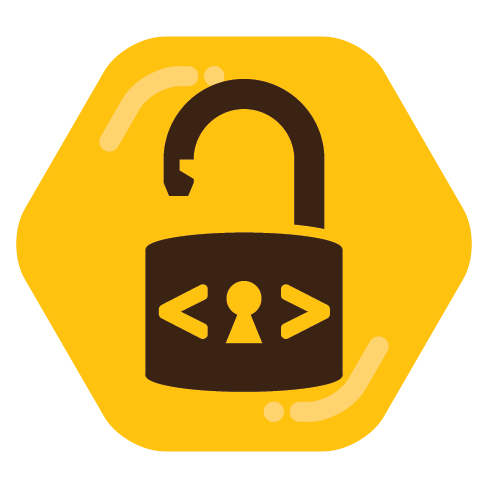

If I had to guess, never having used it myself, is that it has a decent UI that simplifies sometimes complicated operations and it has been around seemingly forever.


If I had to guess, never having used it myself, is that it has a decent UI that simplifies sometimes complicated operations and it has been around seemingly forever.


Personally, I use Hugo. Good for blog type websites.
Text editors are a really personal choice and there are a million different ones. I use either Kate or Micro. Both are great for my use.


Depends on the application. My NAS is bare metal. That box does exactly one thing and one thing only, and it’s something that is trivial to setup and maintain.
Nextcloud is running in docker (AIO image) on bare metal (Proxmox OS) to balance performance with ease of maintenance. Backups go to the NAS.
Everything else is running on in a VM which makes backups and restores simpler for me.


I use Forgejo for my private git repos but in all honesty, it’s massive overkill for my needs.


I have 6 domain renewal notices sitting in my Spam folder now.
Another recent one has been notices supposedly from my email provider saying it’s time to renew. That one almost got me.
I really wish GPG signing of emails had actually taken off. Would have solved this type of problem completely.


For your laptop, might give Thunderbird a go. It’s old school but it still works well.


I’ve bounced between a bunch of different ones. Each time I switched and moved the directory over the formatting and linking tended to break. In the end, I settled on just a raw hierarchical directory structure using raw markdown (using a basic text editor) for typed notes and whatever other relevant media (pictures, pdfs, whatever), and GoodNotes for handwritten notebooks with PDF backups saved to directory on my Nextcloud.
I don’t know, maybe my needs are odd but I’ve just never found a single application that could handle all of my note-taking and documentation needs. Everything is close, but frustratingly annoying in one missing feature or another. And all of them seemed damned slow compared to just opening up a file browser or a terminaland doing what I needed.
As for file syncing, Logseq was pretty easy to handle syncing for. I just put the logseq notes directory on my Nextcloud and Bob’s you’re uncle. Access on my desktop, laptop and mobile devices. Don’t have to use Nextcloud though, just something that would allow you to sync the directory between devices. Syncthing would probably work. Just don’t bounce between devices too fast. Causes conflicts you have to correct manually.
Nowadays, Apple is only really big for digital music if you are (or were) already really deep in their ecosystem. Not sure I’ve heard of any devices that play nice with their DRM in a while and last I had looked (admittedly many years ago) they did not have a compatible app for Android.
Apple music was bigger back 15 or 20 years ago for digital downloads due in large part to the iPod, though I occasionally hear of some odd band or another that only releases their stuff on iTunes.
And since this is a linux community, as a heads up, iTunes is only marginally functional, last I heard, in linux. Apparently it can’t detect connected devices. You’ll probably need a Windows or Mac system to run iTunes if you want to go that route.
For CDs, Amazon, ebay, or discogs. Digital music I usually get from the artist’s webstore if possible, otherwise I’ll buy it from Amazon or BandCamp.
One heads up, Buying and downloading digital music from Amazon is a pain in the butt if you have an Amazon Music subscription. Easy and straightforward though without.
Apple music is also possible but you have to burn the tracks to CD using itunes to move it out of Apple’s ecosystem.
I also hear good things about Tidal but I’ve never used them.


Isn’t that basically SyncThing? I thought it was BitTorrent under the hood.


I tend to change volumes to bind mounts. Makes it easier to backup or move the service.
Might want to avoid using relative paths with bind mounts and declare the full path. It has caused me headaches before.


Thank you for your contributions!


The screenshot in the readme suggests it does, but I couldn’t say for myself. I’m not that rich.


My last laptop was an HP Stream. Crappy laptop, but it had a touchscreen. It worked fine whenever I remembered that it had a touch screen. I didn’t have to set anything up, it was just automagicly setup for me on Ubuntu. Couldn’t tell you how responsive it was and that laptop would have been a poor benchmark anyways, but if I touched a button or scrolled the screen, it would do the thing.
Sorry, I’m old. Prefer a physical keyboard to a screen keyboard any day.


nvtop will show you what processes are using your GPU.


Might take a look at NextCloud though it may be overkill as it’s intended to be a full Google Cloud or Office365 replacement. On the other hand, it is modular so you only have to set up what you actually need.


There’s a couple of options.
I’ve used Grocy. It’s not intended for that particular use case but it would work. More for Grocery management.
Might want to check out https://awesome-selfhosted.net/


Vanilla? XFCE was looked a bit like Win 95/98 the last time I used it, say 5 to 10 years ago. I’ve been using KDE which reminds me more of XP or Vista in default configuration. Probably why I like KDE so much.
What your probably looking for though is a theme.
I have 2 that I use regularly. PIA to unblock things on the internet (and change how things are logged) and Tailscale to access my home network remotely. I’m happy with both of them.